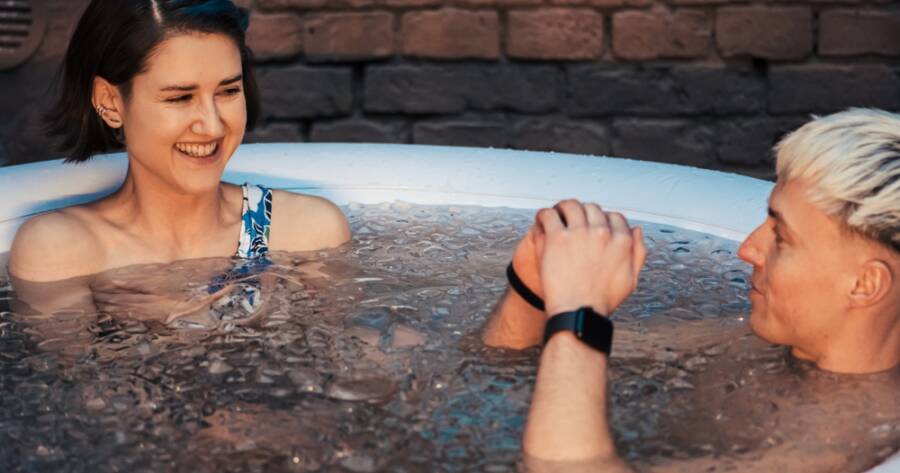Recovery is no longer just for athletes—it’s become a part of everyday wellness routines across the United States. Two of the most popular tools are cold plunges and infrared saunas, each promising better recovery, less soreness, and more energy. While one shocks the body with cold, the other soothes it with gentle heat. Both approaches offer benefits, but they work in completely different ways. Understanding what each does can help you choose the method that best fits your body and goals.
The Cold Plunge: Cooling Down for Faster Recovery
A cold plunge involves immersing yourself in cold water—typically between 45 and 55 degrees Fahrenheit—for a few minutes. The sudden chill triggers your body’s natural stress response, tightening blood vessels and reducing inflammation. This can help muscles recover faster after intense workouts and ease general soreness.
Beyond the physical recovery benefits, cold plunges also have a strong mental component. The brief discomfort teaches you to control your breathing, stay calm, and push through stress. Many people describe feeling alert and refreshed afterward, as if they’ve hit a mental reset button. Over time, regular cold exposure can help build both physical and mental resilience.
However, cold plunges aren’t for everyone. People with heart or circulation issues should be cautious and start slowly, since the cold causes a rapid increase in heart rate and blood pressure.
The Infrared Sauna: Deep Heat for Relaxation and Circulation
Infrared saunas take the opposite approach—using heat rather than cold to promote recovery. Instead of heating the air like a traditional sauna, infrared panels warm the body directly with gentle light waves. The result is a deep, comfortable warmth that encourages sweating at lower temperatures.
This warmth helps muscles relax, increases blood flow, and can ease stiffness after long days of sitting or training. The deep heat can also promote relaxation and reduce tension in both the muscles and the mind. Many people use infrared saunas in the evening to help wind down before sleep.
Infrared saunas are especially appealing to people who prefer calm, restorative recovery sessions rather than high-intensity stimulation. Still, they require proper hydration and time limits, since extended sessions can lead to dehydration or dizziness if you overheat.
Comparing the Benefits: What Each Does Best
Both cold plunges and infrared saunas support recovery, but they help the body in different ways. Cold plunges are best when you want to calm inflammation and wake up your system. The cold reduces swelling and can dull muscle soreness after heavy exertion. It’s an excellent choice after high-intensity exercise or whenever you feel physically overworked.
Infrared saunas, on the other hand, promote warmth, flexibility, and relaxation. The increased blood flow helps deliver oxygen and nutrients to muscles while helping remove waste products from tissue. They’re ideal for low-intensity recovery days or when you want to relieve stress and stiffness rather than soreness.
Some people alternate between both methods—using a cold plunge first to reduce inflammation, then switching to an infrared sauna for relaxation. This contrast approach can improve circulation and create a balanced recovery routine.
Practical Considerations: Comfort, Safety, and Routine
When deciding which tool fits your lifestyle, comfort and consistency matter most. A cold plunge takes willpower—especially for beginners. Start with shorter dips, one or two minutes, and focus on steady breathing to help your body adapt. Once you’re used to the cold, sessions can be extended slightly, though longer isn’t necessarily better.
Infrared saunas feel more approachable. Most people can comfortably stay inside for 10 to 30 minutes. Because they operate at lower temperatures than traditional saunas, the experience is more gentle but still produces a good sweat. Hydration before and after sessions is important to replace fluids lost through perspiration.
If you have any medical conditions or concerns, it’s best to consult a healthcare professional before starting either method—especially if you have heart, blood pressure, or respiratory issues.
Choosing Based on Your Goals
If your goal is quick recovery from exercise, the cold plunge might be more effective. The rapid temperature change helps control swelling and muscle fatigue. If you’re looking for relaxation, improved circulation, or a stress-relief ritual, the infrared sauna provides a soothing counterbalance.
Ultimately, both tools work best when used regularly and in moderation. Neither is a shortcut to perfect recovery, but each supports your body’s natural ability to heal and adapt. Many people find the greatest benefit by rotating between the two based on how their body feels day to day.
Two Paths to Recovery, One Goal
Cold plunges and infrared saunas take opposite routes to the same destination—better recovery and overall well-being. The cold plunge delivers an energizing, inflammation-fighting jolt, while the infrared sauna provides deep relaxation and gentle restoration.
The best choice depends on your needs: use cold to recharge and heat to unwind. Whichever you prefer, both tools remind us that recovery isn’t a luxury—it’s a powerful way to help the body and mind reset for the challenges ahead.

